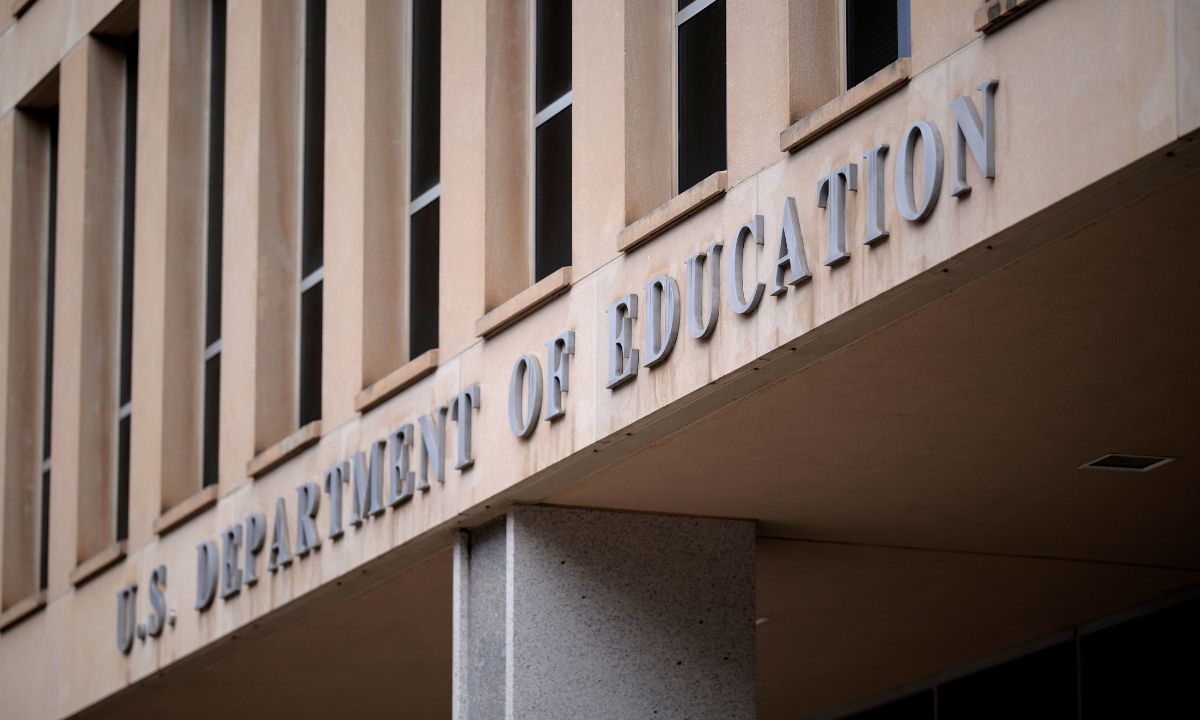As Federal Policies Threaten Special Ed, State & Local Leadership Are a Lifeline
Sandelius: 5 key steps schools and districts can take to protect students with disabilities and enhance learning for all children.

Get stories like this delivered straight to your inbox. Sign up for The 74 Newsletter
As mid-2025 nears, special education stands on increasingly shaky ground. Threats to Department of Education funding, efforts to shift the Individuals with Disabilities Education Act under the Department of Health and Human Services and vague policies against diversity, equity and inclusion are not only jeopardizing billions of dollars in federal support, but threatening to erode critical protections for the most vulnerable students, particularly those with disabilities.
The consequences are real and immediate. Many districts are struggling to plan effectively for the upcoming school year amid the uncertainty. Meanwhile, the 7.5 million students served under IDEA — 15% of the U.S. student population — continue to face stark disparities: achievement gaps of more than 40 points on national assessments, twice the suspension rates, three times higher dropout rates, and dramatically lower college enrollment compared to nondisabled peers. Despite 50 years of federal mandates, the current system still fails these students, raising urgent questions about what could happen if those safeguards erode.
I’m not writing to simply sound another alarm. The reality is that when federal protections unravel, state and local leadership becomes the first line of defense. That responsibility can feel daunting, but it also comes with opportunity. In many places, local leaders are already stepping up, showing that progress is possible even in the face of uncertainty. In a midsize district in Vermont where schools committed to clear expectations, coaching and data-informed practices, the quality of students’ Individualized Education Programs (IEPs) improved on The Ability Challenge’s IEP rubric by 40% in a single year. Better IEPs directly help students because they accurately identify learning needs, set meaningful goals connected to grade-level standards and specify the right supports to help students succeed.
Leaders of this district and others who are moving forward aren’t starting from scratch. They are drawing on what decades of research have made clear: that students with disabilities thrive when they learn alongside their peers in classrooms designed to support all learners. Success means improving processes to create clear pathways and align resources — rethinking how schools group students, measure progress and embrace learning differences. Effective leaders build inclusive systems that ensure compliance while improving outcomes.
Here are a few key steps schools and districts can take (and states can reinforce) to protect students with disabilities and enhance learning for all students:
Champion inclusive education as a whole-school benefit. Research consistently shows that focusing on making schools and classrooms more accessible benefits everyone, not just students with learning differences. Schools that invest in these practices can avoid wasting resources on separate classes or duplicate services and create a more collaborative workplace where teachers feel valued and effective.
Invest in collaborative models. The most successful schools have a common feature: They maximize the time general and special educators work together to plan instruction and build on each other’s expertise. One D.C. charter school that developed an interdisciplinary team to address behavior issues increased student engagement 25%, shifting teachers’ time from managing individual students’ actions to increasing instruction for everyone.
Redesign schedules to maximize capacity. Planning a school schedule can be a highly intensive process that involves many priorities and moving parts. Fitting them together takes a great deal of attention, and technical tasks like student and staff grouping and scheduling can be overlooked. A Northeastern middle school strategically redesigned its schedule to ensure that special education teachers integrated specialized instruction for students with IEPs within their grade-level reading and math classes. This created more efficient use of teacher time by reducing the need for separate pullout groups, provided all special education instruction required by student IEPs, minimized instances where students missed important content and allowed for weekly planning meetings for each teaching team.
Train leaders to coach for inclusive practice. Many general education teachers — more than 80%, by some estimates — report feeling unprepared to teach students with disabilities, not because they don’t care, but because they haven’t been given the tools or time. When instructional leaders provide coaching that addresses how students with learning differences engage with content, achievement improves. In another D.C. charter network where assistant principals were trained to identify and coach all their teachers on learning differences and specialized instruction, achievement gaps between students with disabilities and their non-disabled peers shrank to less than 10 points across grades.
Develop creative solutions to maximize resources and impact. This could include neighboring school districts sharing costs of speech therapists or behavior specialists, partnerships with local universities or arrangements with third-party providers to train staff on inclusive teaching methods. These partnerships can fill gaps in expertise, provide guidance on implementation and help districts sustain momentum on improvement initiatives.
These examples show what’s possible when schools commit to accessibility for all students. Making this the norm means taking these successful approaches — collaborative teaching teams, strategic scheduling, shared expertise and inclusive classroom practices — and implementing them systematically across entire schools and districts.
While state and local leaders drive immediate change, strong federal protections remain crucial for ensuring consistency and access. History has shown that without federal oversight, vulnerable students face dangerously inconsistent support. Education leaders must both advocate for maintaining robust federal accountability and act boldly at state and local levels. State education leaders, superintendents and district administrators cannot wait — they must set clear priorities, allocate resources strategically and maintain essential services despite uncertainty.
The cost of inaction is far greater than the investment required for change. While federal policies may shift, the imperative for building educational systems where disability doesn’t determine destiny is critical. The question is whether state and local leaders have the courage.
Get stories like these delivered straight to your inbox. Sign up for The 74 Newsletter

;)
